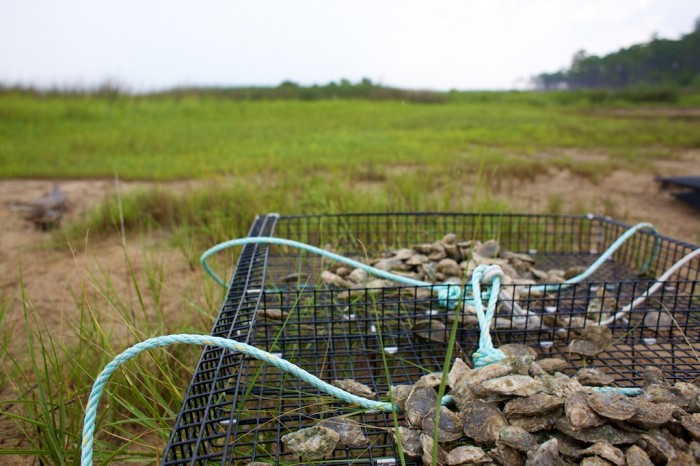Young oysters sit in grow-out cage, before being placed in the water. Bill Walton, assistant professor of marine fisheries for Auburn University, as well as Glen Chaplin, research associate with the Auburn Shellfish Laboratory, and Courtney Coddington, an Auburn graduate student, placed oyster grows in Sandy Bay, near Bayou La Batre, Ala., to study and demonstrate how oysters could successfully be farmed along the Gulf Coast in areas where shellfish aquaculture has not traditionally been practiced, as well as to determine how to grow the most commercially desirable oysters to sell to a premium market. The researchers had been studying the possiblity of introducing oyster farming as a way to help local oystermen who had been struggling to make a living against economic and environmental forces long before the Deepwater Horizon Oil Spill closed all local waters to fishing. Walton said that though putting the 20,000 young oysters out in the Mississippi Sound was a risk, the researchers had no other choice, since the oysters would die from overcrowding in the hatchery if they weren’t moved anyway.

